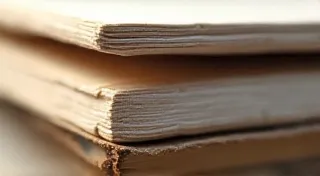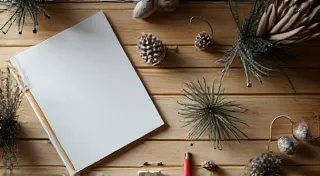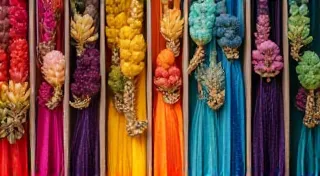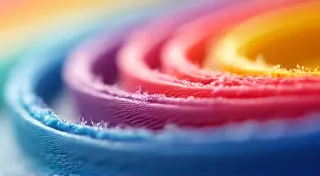The History of Paper Marbling: A Global Art Form
There's a quiet magic in the way ink dances across water, a fleeting beauty captured and transferred to paper. This isn's mere decoration; it’s the legacy of paper marbling, an ancient craft that has rippled across cultures for centuries. For me, it’s more than just a technique; it’s a connection to artisans past, a whisper of creativity echoing across time. I remember stumbling upon a collection of antique accordions at a flea market – each one, a meticulously crafted instrument, possessing a poignant, worn beauty. Holding them, I felt a profound connection to the hands that had breathed life into them, and I’m reminded of the same feeling when I observe a perfectly marbled sheet of paper.
Origins in the Islamic World: Ebru’s Delicate Embrace
The story of paper marbling truly begins in the Islamic world, specifically in 15th-century Ottoman Turkey. It's believed that the technique, known as ebru, originated with Sufi mystics. These individuals sought ways to visually represent the divine, and the swirling, unpredictable patterns of marbling seemed to embody the infinite and unknowable nature of God. The name ebru itself is evocative; it translates roughly to "cloud" or "semblance," a fitting description of the ethereal forms that emerge from the water’s surface.
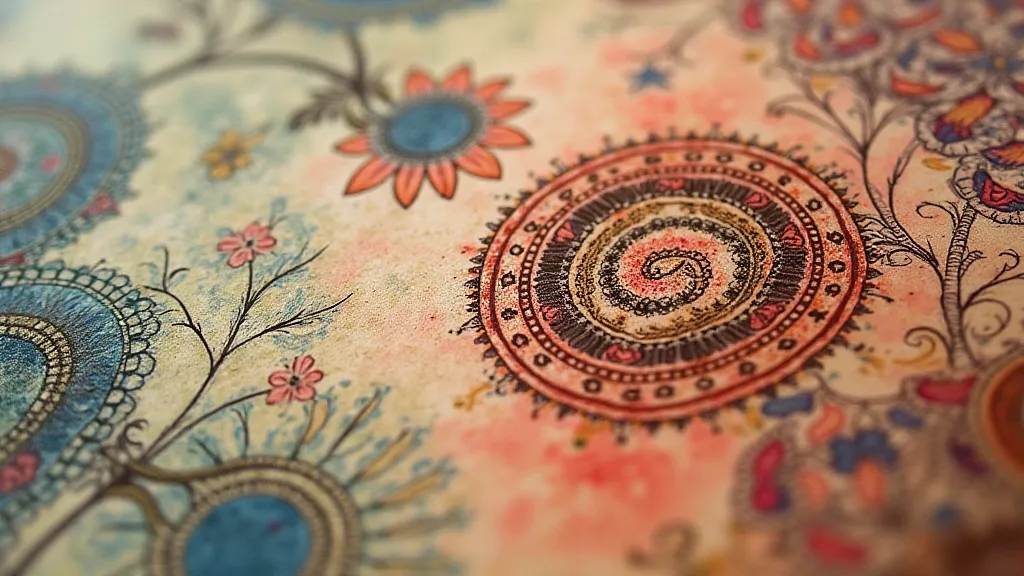
Early ebru masters developed sophisticated methods, using natural pigments derived from plants, minerals, and even insects. Gum tragacanth, a natural gum from the carob tree, was crucial—it acted as a thickening agent allowing the colors to float and interact on the water's surface before being transferred to the paper. These were not simply artists; they were alchemists, experimenting with the chemistry of pigments and the physics of fluid dynamics. The secrecy surrounding the techniques only added to the mystique, with knowledge often passed down through families or within small circles of practitioners. The right choice of paper is also critical to the final result, and enthusiasts frequently seek advice on choosing the right paper for paper marbling to ensure the colors adhere properly and the overall effect is visually stunning.
The Silk Road and Beyond: A Journey to Japan and Europe
Like so many artistic traditions, paper marbling didn't stay confined to its place of origin. The Silk Road facilitated its spread eastward, reaching Japan by the 16th century. There, the technique was adapted and incorporated into Japanese bookbinding and decorative arts, known as suminagashi. While sharing a common ancestry, suminagashi often displays a more minimalist aesthetic, favoring monochrome palettes and focusing on flowing, ink-like patterns that resemble ripples on a still pond. The Japanese refined the process, often using only a single color and embracing the beauty of imperfection – a core tenet of Zen philosophy.
The Europeans encountered paper marbling much later, during the 17th century, primarily through trade and diplomatic exchanges. Initially, it was treated as a novelty, a captivating spectacle demonstrating a seemingly magical process. However, it quickly gained traction among bookbinders and decorative artists, who found it a unique way to embellish book covers and create personalized stationery. The English, in particular, embraced the technique, developing their own variations and incorporating it into their craft traditions. Many modern practitioners also seek ways to embrace more eco-friendly approaches, searching for sustainable paper marbling practices.
Distinct Styles and Techniques: A Kaleidoscope of Creativity
As paper marbling traveled and evolved, distinct regional styles emerged. Turkish ebru often features complex, elaborate designs incorporating floral motifs, geometric patterns, and calligraphic elements. Japanese suminagashi prioritizes simplicity and monochromatic palettes. The European tradition encompasses a wide range of approaches, from the "float" method (where colors are dropped onto the water’s surface and allowed to float) to the "comb" or "raking" method (which uses tools to manipulate the pigments into intentional patterns).
The materials also played a significant role in shaping the aesthetic of different regional styles. While gum tragacanth remained a common thickening agent, the types of pigments used varied widely. Turkish artisans employed vibrant colors derived from saffron, indigo, and madder. Japanese artists favored sumi ink and natural dyes derived from plants. European artisans experimented with a wider range of colors, often incorporating metallic pigments to create shimmering effects. For those looking to begin this beautiful practice, a comprehensive list of paper marbling supplies is a great place to start.
The 19th and 20th Centuries: A Period of Decline and Revival
The 19th century witnessed a decline in the popularity of paper marbling, as mass production and industrialization began to overshadow traditional crafts. The intricate techniques and time-consuming nature of the process made it difficult to compete with cheaper, machine-produced alternatives. Knowledge of the craft was often lost, passed down only within small families or forgotten altogether. The ornate beauty of antique bound books often holds a silent testament to this bygone era, an echo of the skilled hands that once crafted them.
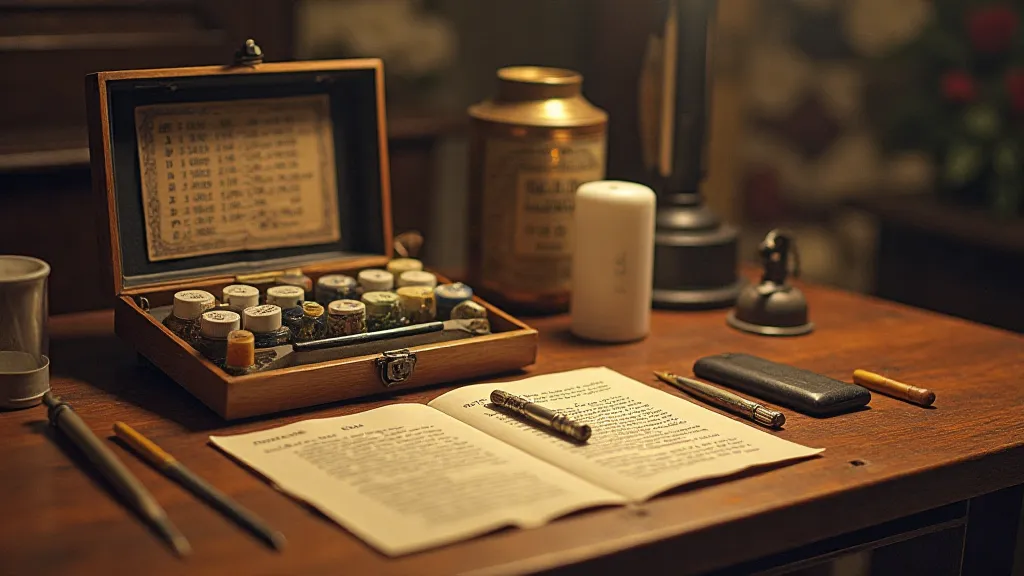
However, the 20th century saw a resurgence of interest in traditional crafts, and paper marbling was no exception. Dedicated artisans and enthusiasts began to rediscover and revive the techniques, meticulously documenting processes and sharing knowledge. Today, paper marbling enjoys a global following, with practitioners experimenting with new materials, techniques, and design aesthetics while remaining deeply rooted in the traditions of the past. The technique, particularly its Turkish form, has inspired renewed interest – explore the delicate dance of colors with Ekri paper marbling: the Turkish delight of floating colors.
Preserving a Legacy: Restoration and Collecting
For those fascinated by the history of paper marbling, there are two compelling avenues: restoration and collecting. Antique marbled papers often grace the covers of rare books and manuscripts, and their preservation is vital to maintaining the integrity of these historical artifacts. Restoration can involve meticulously cleaning and repairing damaged paper, stabilizing fading colors, and re-backing covers to ensure their longevity.
Collecting marbled paper, particularly antique examples, can be a rewarding pursuit. Each sheet tells a story – a glimpse into the artistic preferences and craft traditions of a bygone era. Recognizing authentic antique marbled paper requires careful observation. Look for subtle imperfections, variations in color intensity, and the characteristic “bloom” or mottling that distinguishes hand-made paper from modern alternatives. The subtle wear and tear, the faint traces of the artisan’s hand—these are the hallmarks of authenticity, and they speak to the beauty of a craft lovingly preserved across generations. The quiet appreciation of these treasures provides a unique and moving connection to the human impulse to create.
Beyond the technical aspects of restoration, understanding the historical context and artistry behind each piece enhances the appreciation for these unique artifacts. The techniques, materials, and aesthetic preferences of past artisans offer invaluable insights into the cultural landscape of different eras. Furthermore, the ongoing efforts to preserve and revive the art of paper marbling contribute to the continuity of artistic heritage and inspire future generations of creators.
The enduring appeal of paper marbling lies not only in its aesthetic beauty but also in its connection to a rich and complex history. From its origins in the Sufi monasteries of the Islamic world to its subsequent journey along the Silk Road and its eventual embrace by European artisans, paper marbling has traversed continents and cultures, evolving and adapting while retaining its core essence. The interplay of color, texture, and pattern creates a mesmerizing visual experience that transcends time and place.
As interest in handmade crafts and traditional techniques continues to grow, paper marbling is experiencing a renaissance. Contemporary artists and practitioners are exploring new approaches and pushing the boundaries of the art form, while remaining grounded in the techniques and aesthetics of the past. The combination of tradition and innovation ensures that paper marbling will continue to captivate and inspire for generations to come. The meticulous process, and the beautiful result, are a testament to the enduring power of human creativity and the timeless appeal of art.
